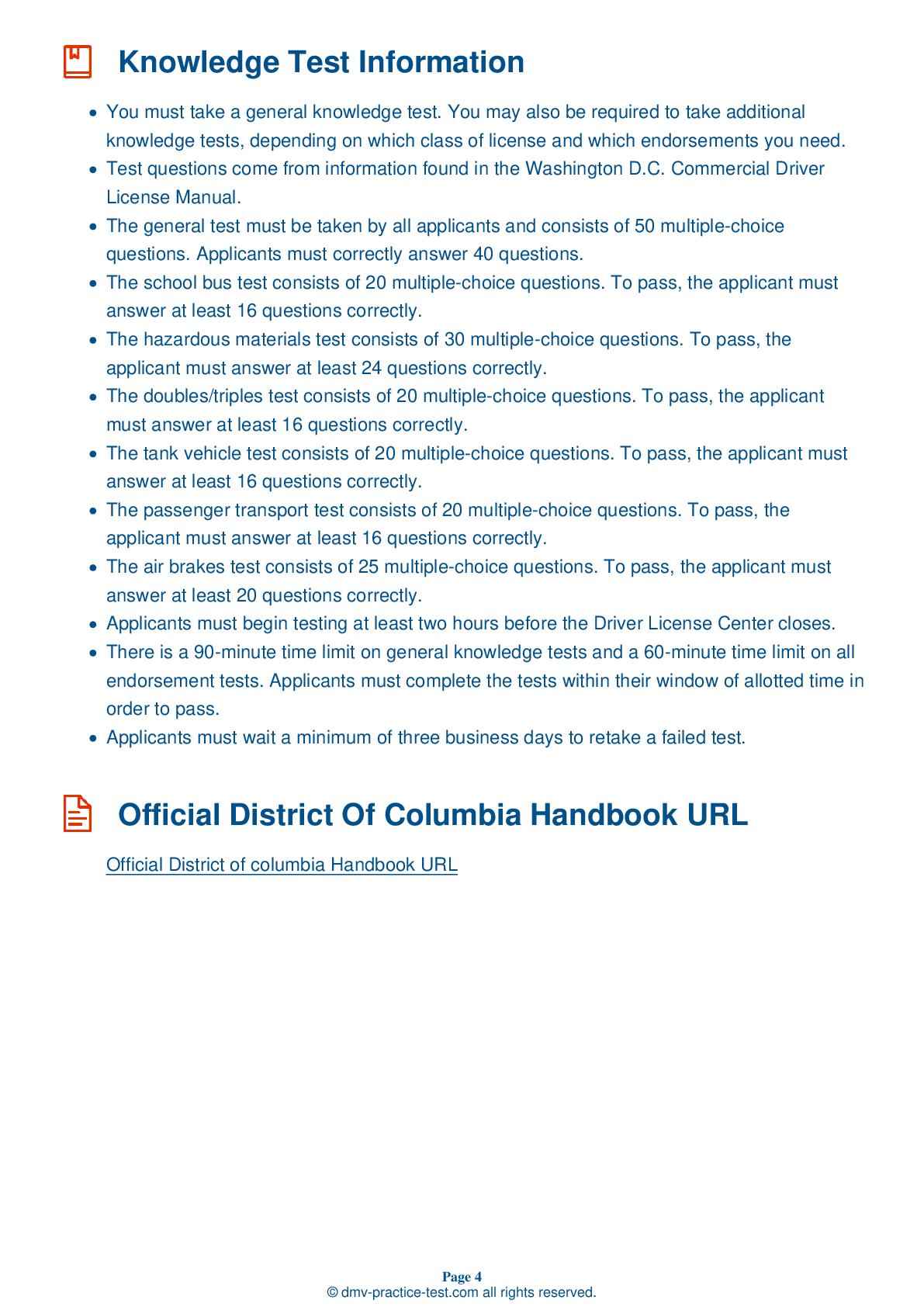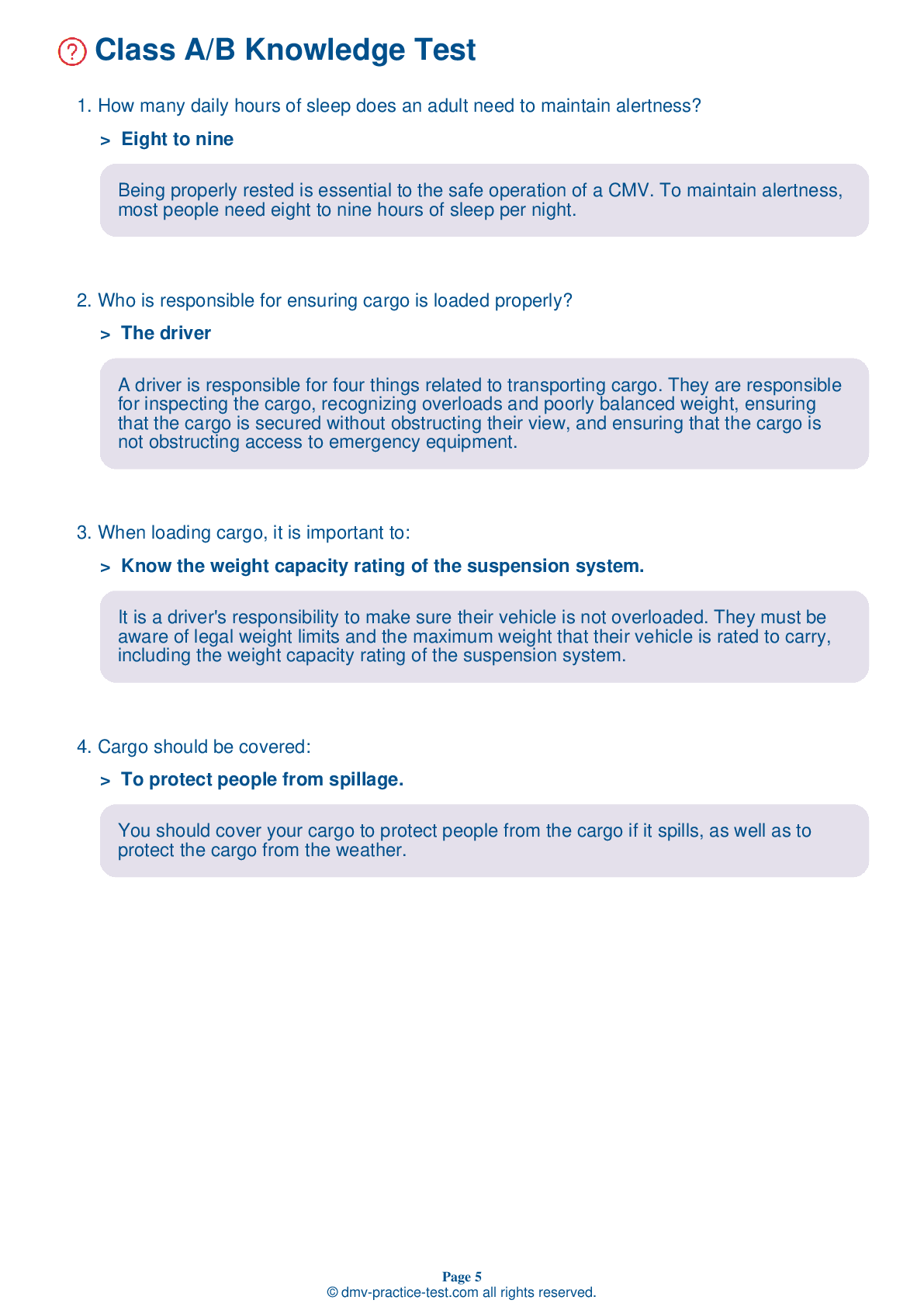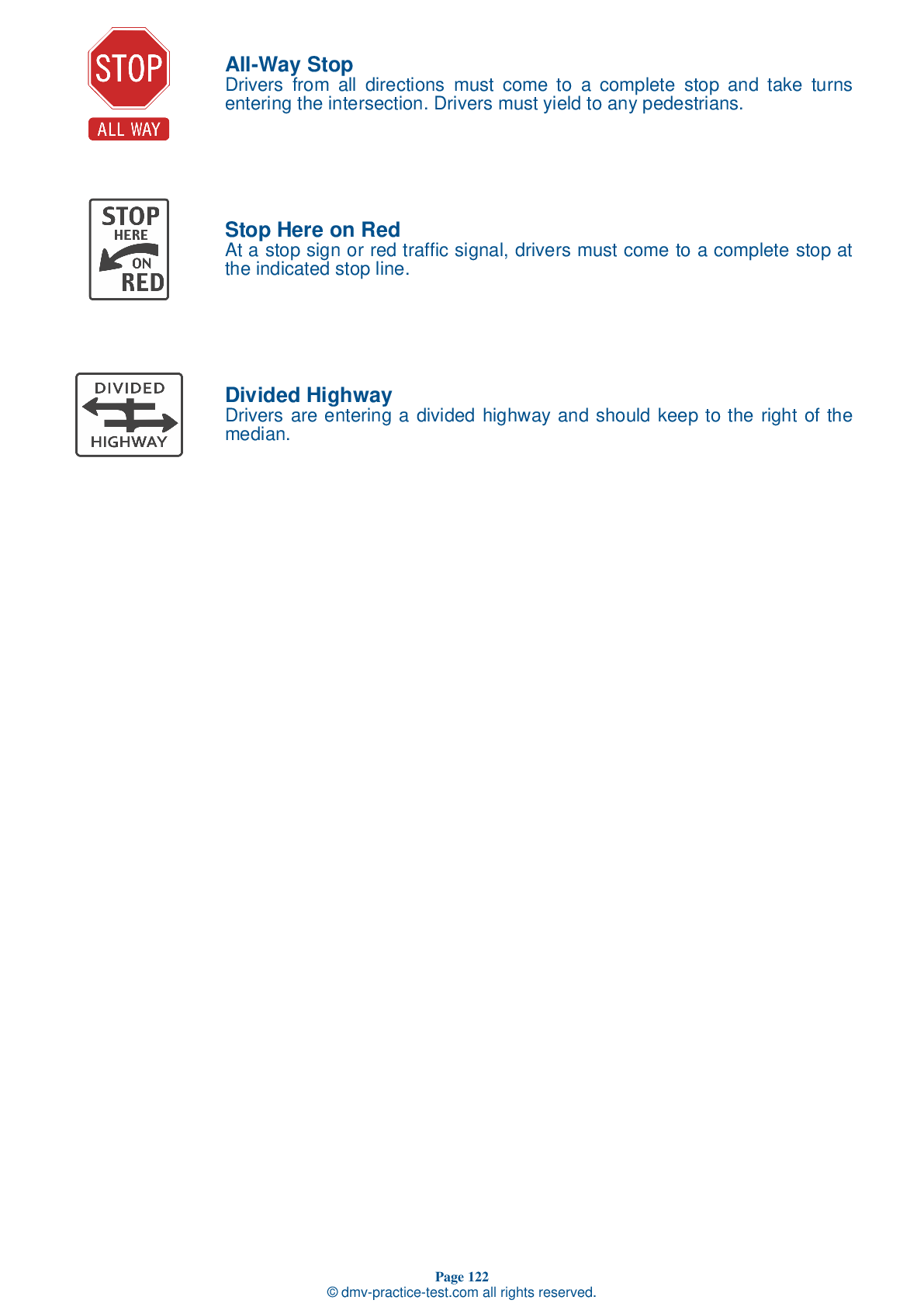Class A Driving Test | District Of Columbia 2025 #1
Train for FREE online with our District Of Columbia class A license test. The official exam test consists of several obligatory parts, with all of them checking your knowledge of different blocks of road rules. If you need to obtain a DC CDL class A permit in 2025, practice as much as possible. Free sample tests published on our website will help you check and improve your knowledge and boost your grades. Please bear in mind that CDL class A requirements may vary from state to state.
1 . To ensure you do not interfere with traffic while driving a heavy vehicle, you should:
If the weight of your vehicle prevents you from matching the speed of surrounding traffic, you should stay in the right lane, if possible.
2 . If something is found to be unsafe during a pre-trip inspection, you should:
If a pre-trip inspection reveals anything unsafe about your vehicle, you must get it repaired. It is illegal to operate an unsafe vehicle.
3 . When driving through fog, a driver should:
If you must drive in fog, you should use your low beam headlights.
4 . You must put out emergency warning devices within ____ of stopping on the side of the road.
If you must stop on the shoulder of a road, put out your emergency warning devices within 10 minutes of stopping. When pulling off the road to stop, be sure to turn on your four-way emergency flashers.
5 . Which factor does not have an impact on a person’s blood alcohol concentration (BAC)?
The three main factors that determine a person's blood alcohol concentration (BAC) are the amount of alcohol consumed, how quickly the alcohol is consumed, and the person's weight.
6 . Air brakes are:
As long as the brakes are properly maintained, using air brakes is a safe and effective method of stopping large, heavy vehicles.
7 . Before driving a vehicle with air brakes, you should ensure that the spring brakes come on automatically when:
Before driving a vehicle with air brakes, you should ensure that the spring brakes come on automatically when air tank pressure falls to a level between 20 and 45 psi. You can do this by chocking the wheels and releasing air from the braking system by stepping on and off the brake pedal. Once the pressure drops to an unsafe level, the parking brake valve should pop out and spring brakes should come on.
See the exact questions that will be on the 2025 District Of Columbia DMV exam.
99.2% of people who use the cheat sheet pass the FIRST TIME
Lillian MCcranie explains how our CDL study guide was helpful in passing the exam and recommends it to everyone.
Cameron tells us how he purchased the CDL exam, and found it to be a useful tool which helped him pass the exam and find a job.



